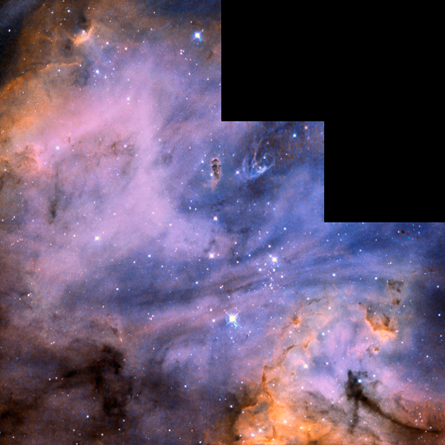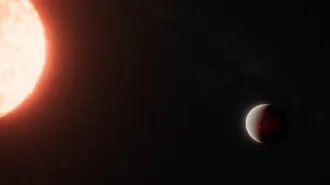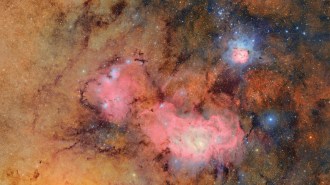Before a star can be born, gas and dust from a cold interstellar cloud must gather together into a distinct clump. Astronomers say they have now witnessed this earliest of steps in the star-birthing process.

French scientists used a radio telescope to home in on emissions from a dark, dusty cloud of material in the Taurus star-forming region some 400 light-years from Earth. By mapping dust emission from the cloud along with two chemical tracers of density, the researchers found that the cloud has begun to detach from its surroundings and contract. In addition, the density at the cloud’s center is higher than that at its outer edge, the team found.
“This is the discovery of a cloud at the really beginning of the star formation process, with a new star expected in about 1 million years,” says study member Laurent Pagani of the Observatoire de Paris. He and his colleagues posted their findings online December 8.
“What this represents is the earliest stage of the birth of stars,” concurs astronomer Ted Bergin of the University of Michigan in Ann Arbor, who is not a coauthor of the study. Generally, when astronomers observe a cloud that doesn’t contain a star, the cloud’s motion is tied to any dust or gas around it, he adds. “This is one instance where clear differences are seen” and the core has its own identity, he says. That means the cloud is becoming an independent entity with its own properties, such as gravity — properties necessary, but not sufficient, to have material coalesce into a star.
Pagani and his collaborators used the 30-meter IRAM radio telescope atop Pico Veleta in Spain to study the cloud, known as L1506C. The object is still too diffuse to be considered a prestellar core, an early precursor to a star, Pagani says. But by measuring telltale shifts in specific radio frequencies emitted by an assortment of molecules at the front and back parts of the cloud as observed from Earth, the team discerned that the object is clearly contracting, says Pagani. It is therefore “on its way to becoming denser” and evolving into a prestellar core, he adds.
Gravity ultimately transforms many such starless, cold cores into protostars, stellar embryos that release tremendous amounts of heat as they pack on more and more material. Eventually, a protostar becomes dense enough to ignite nuclear reactions at its core, a sign that a bona fide star has been born.
“How these objects condense out of the surrounding gas in the galaxy is something that we have not fully solved,” notes Bergin. “If you want to understand how stars are born, prestellar cores are the objects that will unlock those secrets,” he notes. Once a star has fully formed, it’s too late to discover how it got there, Bergin adds.
Radio telescopes “are the instrument of choice” for investigating star formation, Bergin says. The telescopes are sensitive to emissions that penetrate the dusty debris surrounding baby stars and prestellar cores, allowing the instruments to peer into the cloud’s interior. In particular, a highly sensitive network of radio dishes called the Atacama Large Millimeter Array in Chile “will revolutionize our understanding of star and planet birth,” notes Bergin. Consisting of 50 dishes, each 11 meters in diameter, the array is scheduled to being operation in about 2012.







